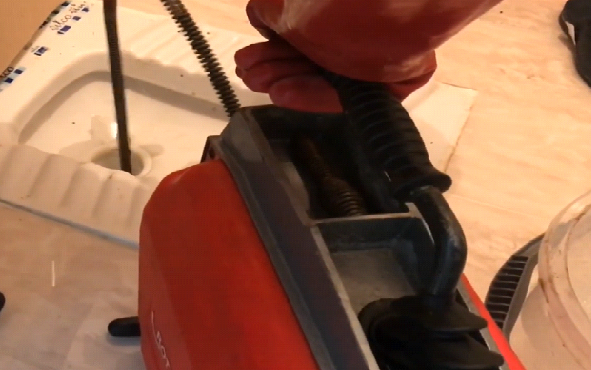In today’s fast-paced industrial world, automation is transforming the way machines work. Robotics, AI-driven control systems, and smart manufacturing technologies are making production faster, safer, and more efficient. Yet, amid all these advancements, one component continues to hold its ground — the hydraulic cylinder.
Despite the growing adoption of electric actuators and pneumatic systems, hydraulic cylinders remain indispensable for industries that demand high power, reliability, and precision. Their ability to generate immense force with minimal footprint makes them a cornerstone of modern automation systems.
In this blog, we’ll explore why hydraulic cylinders continue to be a vital part of industrial automation and how they’ve evolved to meet the demands of the modern era.
1. Understanding the Role of Hydraulic Cylinders
Before diving into their modern-day significance, it’s important to understand how hydraulic cylinders work. A hydraulic cylinder is a mechanical actuator that converts the energy of pressurized hydraulic fluid into linear motion and force.
They are widely used in applications where lifting, pushing, pulling, or pressing heavy loads is required — from construction and mining machinery to manufacturing, agriculture, and automation systems.
A typical hydraulic cylinder consists of:
Cylinder barrel
Piston and piston rod
Seals and end caps
Hydraulic fluid ports
When fluid is forced into the cylinder, it moves the piston, creating a controlled linear movement that can handle enormous loads.
2. The Power That Automation Can’t Replace
One of the key reasons hydraulic cylinders remain irreplaceable is their power density. Automation systems powered by electricity or pneumatics can’t match the sheer force-to-size ratio that hydraulics offer.
For instance, in heavy industries like construction, marine, or aerospace manufacturing, machines must lift, tilt, or press tons of weight. In such cases, electric actuators are often limited due to torque constraints, while hydraulic cylinders deliver consistent, high force effortlessly.
Automation has advanced, but even the most sophisticated robotic systems rely on hydraulic cylinders when high-power motion control is required. Whether it’s in robotic arms used for forging or automated presses in automotive plants, hydraulic power remains unmatched.
3. Precision and Control in Modern Systems
A common misconception is that hydraulic systems lack precision compared to electronic automation systems. However, modern hydraulic cylinders are now integrated with servo valves, proportional controls, and position sensors, allowing highly accurate control of movement and force.
Today’s hydraulic cylinders can achieve micron-level precision, making them ideal for automated applications where exact positioning and smooth operation are critical.
For example:
In manufacturing lines, hydraulic cylinders ensure synchronized, controlled movements during assembly or welding.
In robotics, smart hydraulics offer flexible motion control integrated with programmable logic controllers (PLCs).
Thus, rather than being replaced by automation, hydraulic cylinders have evolved to enhance automation performance.
4. Reliability and Durability in Harsh Conditions
Industrial environments are often harsh — involving dust, heat, vibrations, or exposure to corrosive materials. While electric or pneumatic systems can be sensitive to such conditions, hydraulic cylinders excel in rugged applications.
They can operate reliably in:
High-temperature environments
Submerged or offshore conditions
Heavy-duty construction sites
Their simple yet robust design ensures minimal maintenance and long operational life. Automation systems in mining, oil rigs, and heavy machinery still depend on hydraulics for this reason — reliability in the toughest environments.
5. Compact Design with High Force Output
Another reason hydraulic cylinders remain essential is their compact yet powerful design. Unlike electric actuators, which require larger motors and gear assemblies to achieve similar force, hydraulics deliver massive power in smaller dimensions.
In automated machinery where space is limited — such as in injection molding or robotic presses — hydraulic cylinders offer a space-saving, high-efficiency solution. This makes them indispensable even as industries strive for more compact, integrated machine designs.
6. Integration with Smart Automation Systems
The era of automation doesn’t mean the end of hydraulics — rather, it has led to their reinvention. The rise of electro-hydraulic systems blends the best of both worlds — the power of hydraulics and the precision of electronics.
Smart hydraulic cylinders now come with:
Position and pressure sensors
IoT-enabled monitoring
Automated diagnostics and maintenance alerts
Through data collection and predictive analytics, these advanced hydraulic systems can monitor performance, detect leaks, and prevent downtime — aligning perfectly with Industry 4.0 goals.
This digital integration ensures hydraulic systems are no longer “old-school” components but intelligent power units that fit seamlessly into automated environments.
7. Energy Efficiency and Sustainability Improvements
One of the criticisms hydraulic systems once faced was energy inefficiency. Traditional setups often led to energy loss due to fluid leakage or constant pump operation. However, modern hydraulic cylinder systems have evolved significantly.
Manufacturers now design energy-efficient hydraulic systems that use:
Variable speed drives (VSDs)
Load-sensing pumps
Eco-friendly hydraulic fluids
Regenerative circuits
These innovations reduce energy waste and improve overall system efficiency. When integrated with automation controls, hydraulic cylinders can operate only when needed, minimizing idle energy use and promoting sustainable manufacturing practices.
8. Cost-Effectiveness and Long-Term Value
Automation technology, especially robotics, often requires significant upfront investment. While electric actuators can offer clean operation, they tend to be costlier for high-force applications.
Hydraulic cylinders, on the other hand, provide high performance at a relatively lower cost. Their long lifespan, low maintenance needs, and ability to handle tough workloads make them a cost-effective choice for industries looking to balance automation with affordability.
Moreover, replacing existing hydraulic systems with electric alternatives can be expensive and unnecessary. By upgrading hydraulic systems with smart sensors and controls, industries can modernize operations without massive capital expenditure.
9. Versatility Across Industrial Applications
The adaptability of hydraulic cylinders is another reason they’ve remained relevant in automated systems. They are used across multiple sectors, such as:
Manufacturing: For presses, stamping machines, and assembly automation
Construction: In excavators, cranes, and loaders
Agriculture: For lifting and tilting mechanisms in tractors
Marine: For stabilizers and steering control
Aerospace: In landing gear and flight simulators
Automotive: In robotic arms, molding machines, and testing equipment
From high-speed automation lines to heavy-load operations, hydraulic cylinders offer unmatched flexibility in how they can be applied.
10. The Future of Hydraulics in an Automated World
As industries continue to adopt AI-driven and autonomous technologies, hydraulic cylinders are evolving alongside. The future of hydraulics lies in smart hybrid systems that combine:
Hydraulic power
Electronic precision
Digital intelligence
These systems are already being used in automated material handling, robotic manufacturing, and precision farming. The goal is not to replace hydraulics but to make them smarter, cleaner, and more efficient.
Hydraulic systems are also benefiting from sustainable innovations — such as biodegradable fluids, leak-free seals, and advanced recycling programs — ensuring they align with the green goals of future industries.
Conclusion
Automation may have transformed the industrial landscape, but hydraulic cylinders continue to play a critical role. Their unmatched power, durability, precision, and adaptability make them the backbone of modern machinery — even in a digital-first era.
By integrating hydraulics with smart controls and IoT technologies, industries can achieve the best of both worlds: the strength of traditional power systems and the intelligence of automation.
In short, hydraulic cylinders are not being replaced — they’re being redefined for the next generation of automated industries.







